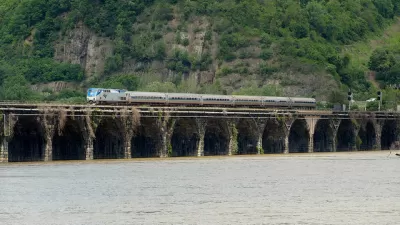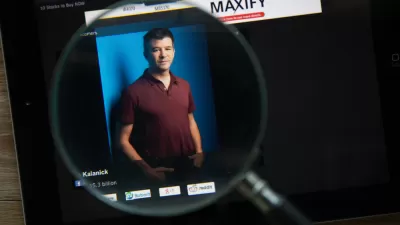NYC's Taxi and Limousine Commission approved a pilot program for apps that will allow users to request a yellow taxi ride on their smartphones rather than having to “raise [their] arms toward oncoming traffic” the old-fashioned way.
Skittish about considering the permanent usage of increasingly popular cab-hailing apps like Hailo, Uber, and GetTaxi, the commission only considering a pilot program for a trial period, and voted to limit such use to a certain geographic reach. Opponents of apps fear it will jeopardize business and “violate the industry's long-standing ban on prearranged rides in yellow taxis” wrote Matt Flengenheimer in The New York Times prior to the vote.“The tussle over smartphone apps has highlighted tensions facing a city that often trumpets its tech-friendliness but has been criticized by app developers and users for not moving quickly enough to support such services,” he said. Meanwhile, in a recent blog post, Travis Kalanick, the chief executive of Uber, the cab-hailing app that recently debuted in the city then stopped services just weeks later, told customers to try his product “in more innovation-friendly cities” like Boston and Toronto, reported Flegenheimer.
Taxi drivers won't be the only ones having to adapt to the new rules. "The move to open New York’s taxi market to apps will require adaptation from app companies like Hailo, Uber, GetTaxi and others, whose products are in use in other markets but do not yet conform to the requirements laid out in the TLC’s new rules," notes Ted Mann. "The regulations approved Thursday, among other requirements, will mandate that any app interfaces directly with the existing taximeter system in the city’s taxi fleet when calculating fares. The rules also disallow payment of additional fees to drivers who find customers using an app, as opposed to a street hail."
FULL STORY: Vote Clears Way for Taxi-Hailing Apps

Study: Maui’s Plan to Convert Vacation Rentals to Long-Term Housing Could Cause Nearly $1 Billion Economic Loss
The plan would reduce visitor accommodation by 25,% resulting in 1,900 jobs lost.

North Texas Transit Leaders Tout Benefits of TOD for Growing Region
At a summit focused on transit-oriented development, policymakers discussed how North Texas’ expanded light rail system can serve as a tool for economic growth.

Why Should We Subsidize Public Transportation?
Many public transit agencies face financial stress due to rising costs, declining fare revenue, and declining subsidies. Transit advocates must provide a strong business case for increasing public transit funding.

How Community Science Connects People, Parks, and Biodiversity
Community science engages people of all backgrounds in documenting local biodiversity, strengthening connections to nature, and contributing to global efforts like the City Nature Challenge to build a more inclusive and resilient future.

Alabama: Trump Terminates Settlements for Black Communities Harmed By Raw Sewage
Trump deemed the landmark civil rights agreement “illegal DEI and environmental justice policy.”

Dear Tesla Driver: “It’s not You, It’s Him.”
Amidst a booming bumper sticker industry, one writer offers solace to those asking, “Does this car make me look fascist?”
Urban Design for Planners 1: Software Tools
This six-course series explores essential urban design concepts using open source software and equips planners with the tools they need to participate fully in the urban design process.
Planning for Universal Design
Learn the tools for implementing Universal Design in planning regulations.
City of Santa Clarita
Ascent Environmental
Institute for Housing and Urban Development Studies (IHS)
City of Grandview
Harvard GSD Executive Education
Toledo-Lucas County Plan Commissions
Salt Lake City
NYU Wagner Graduate School of Public Service




























